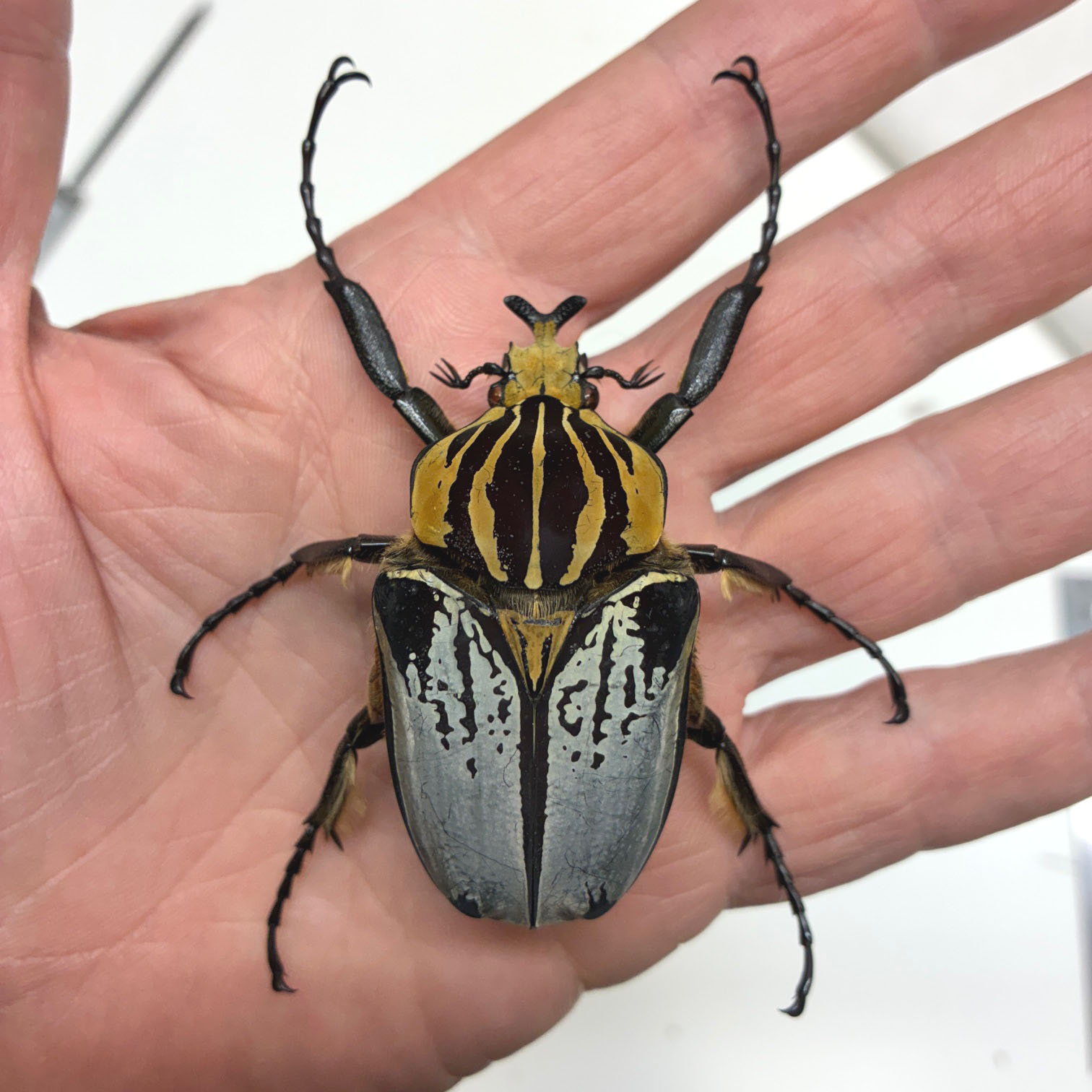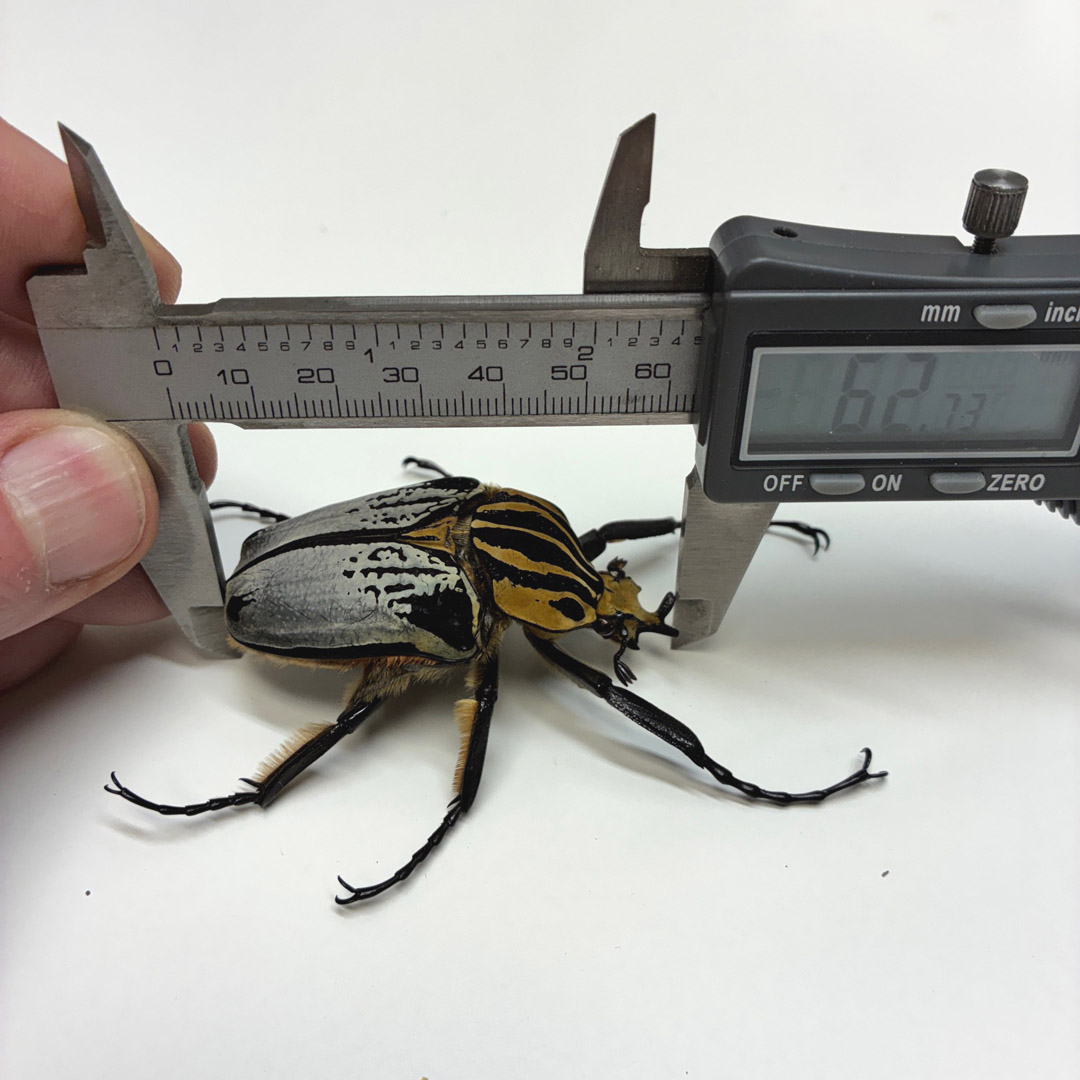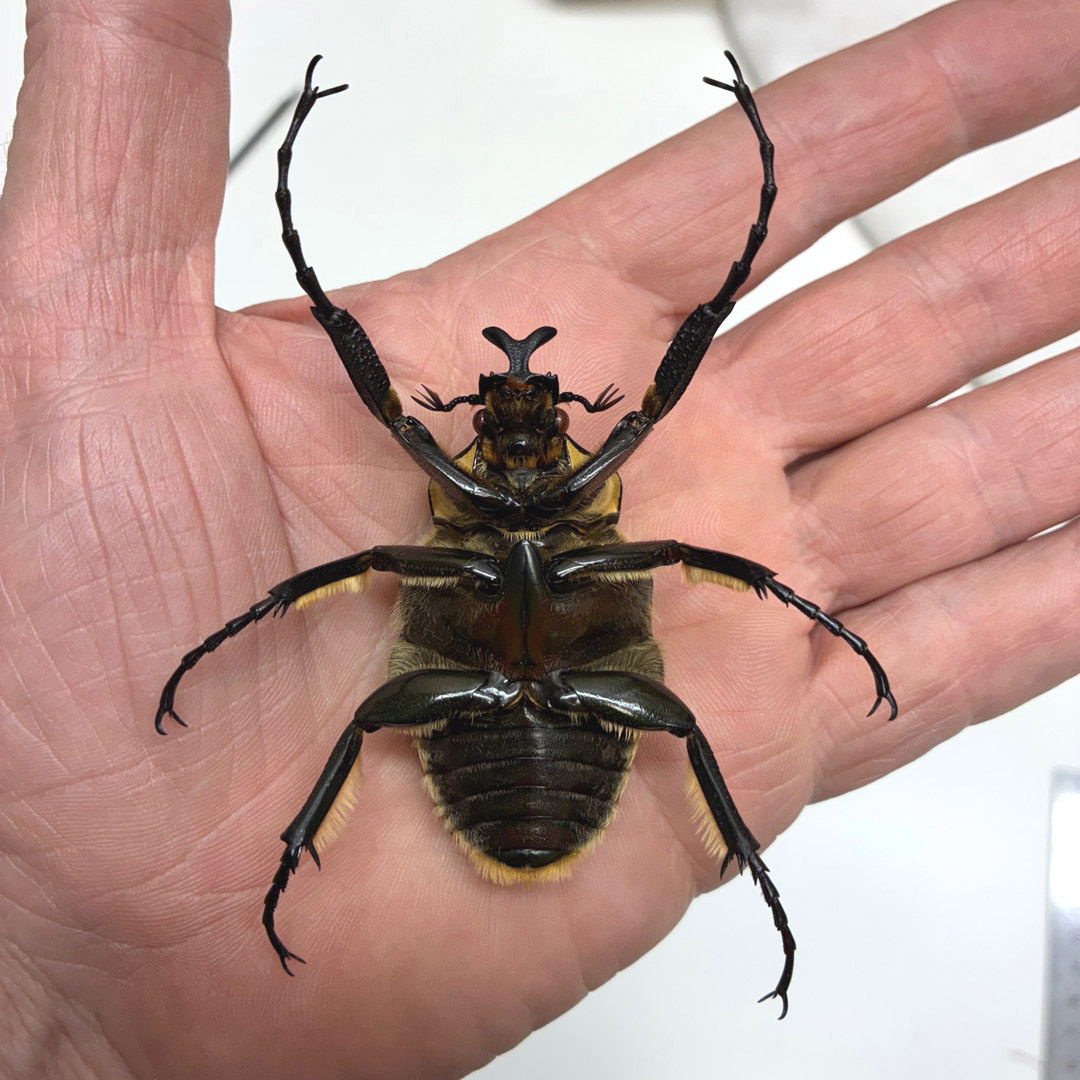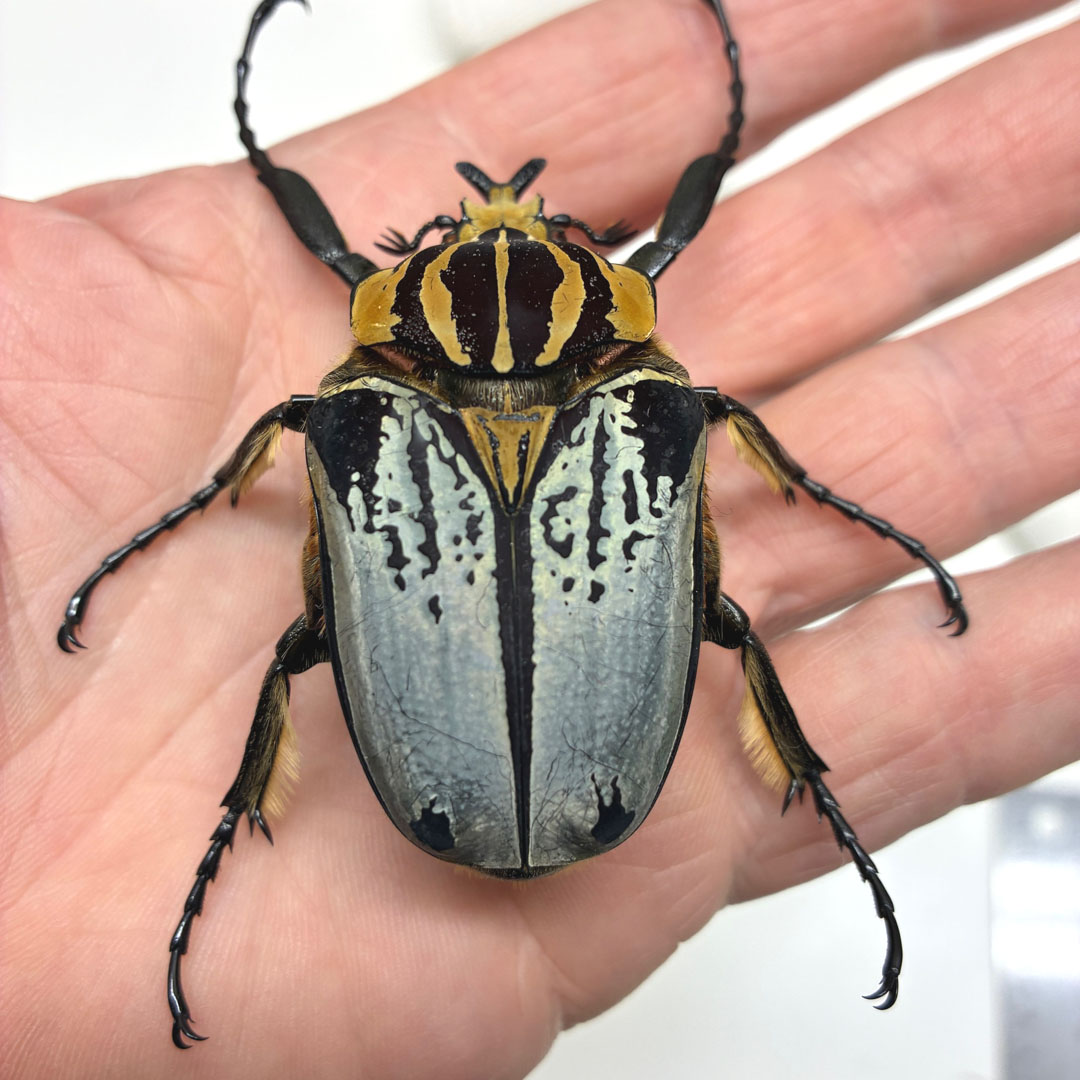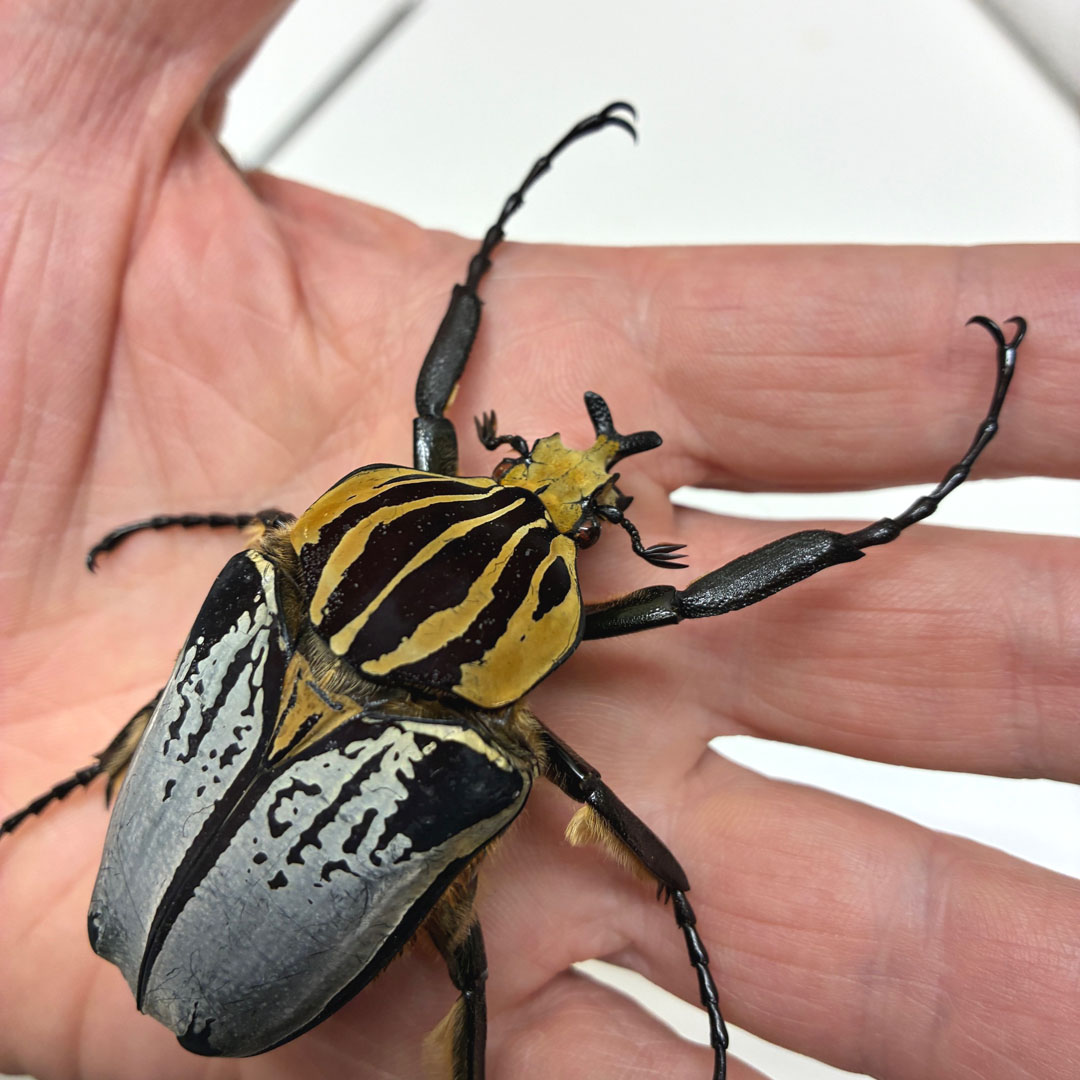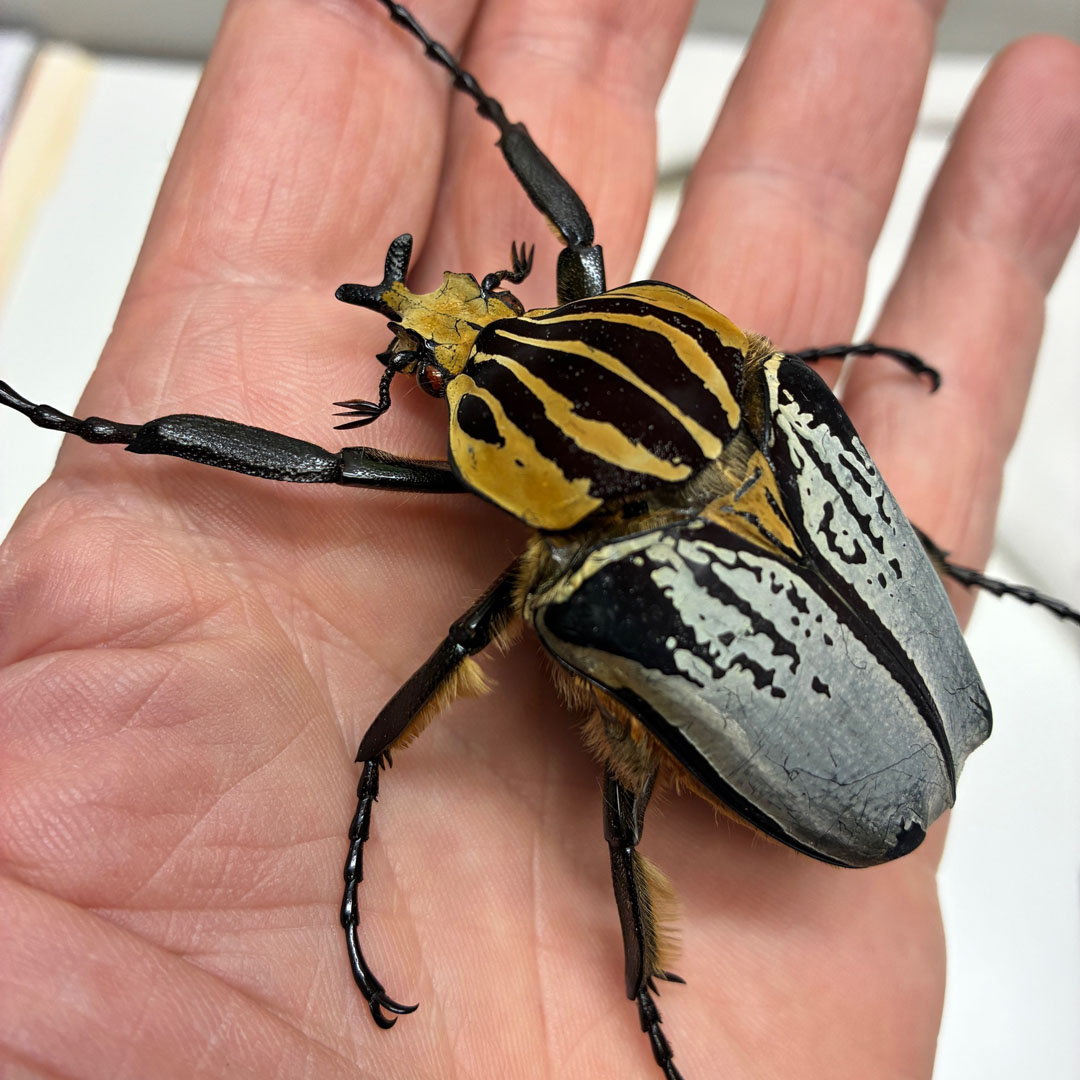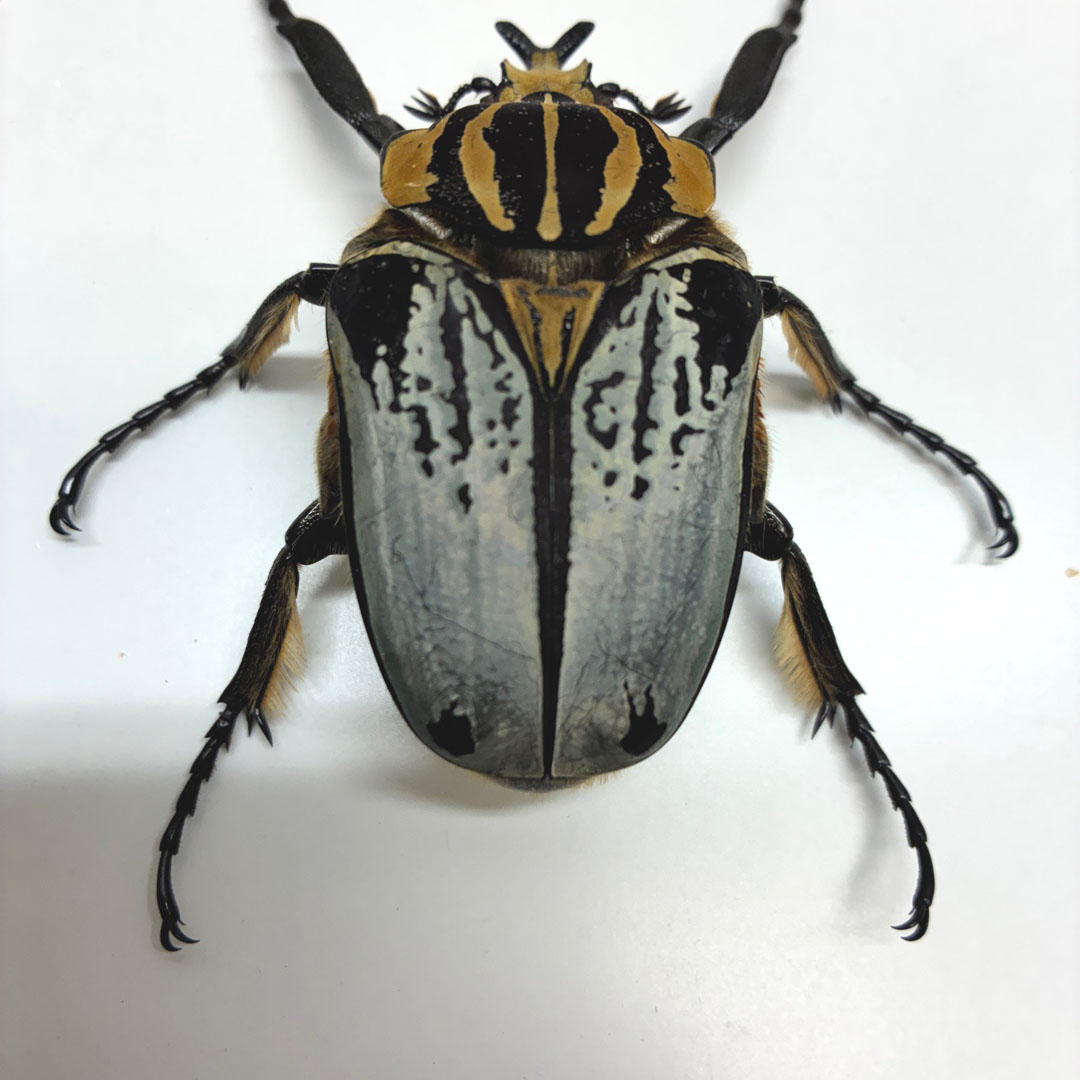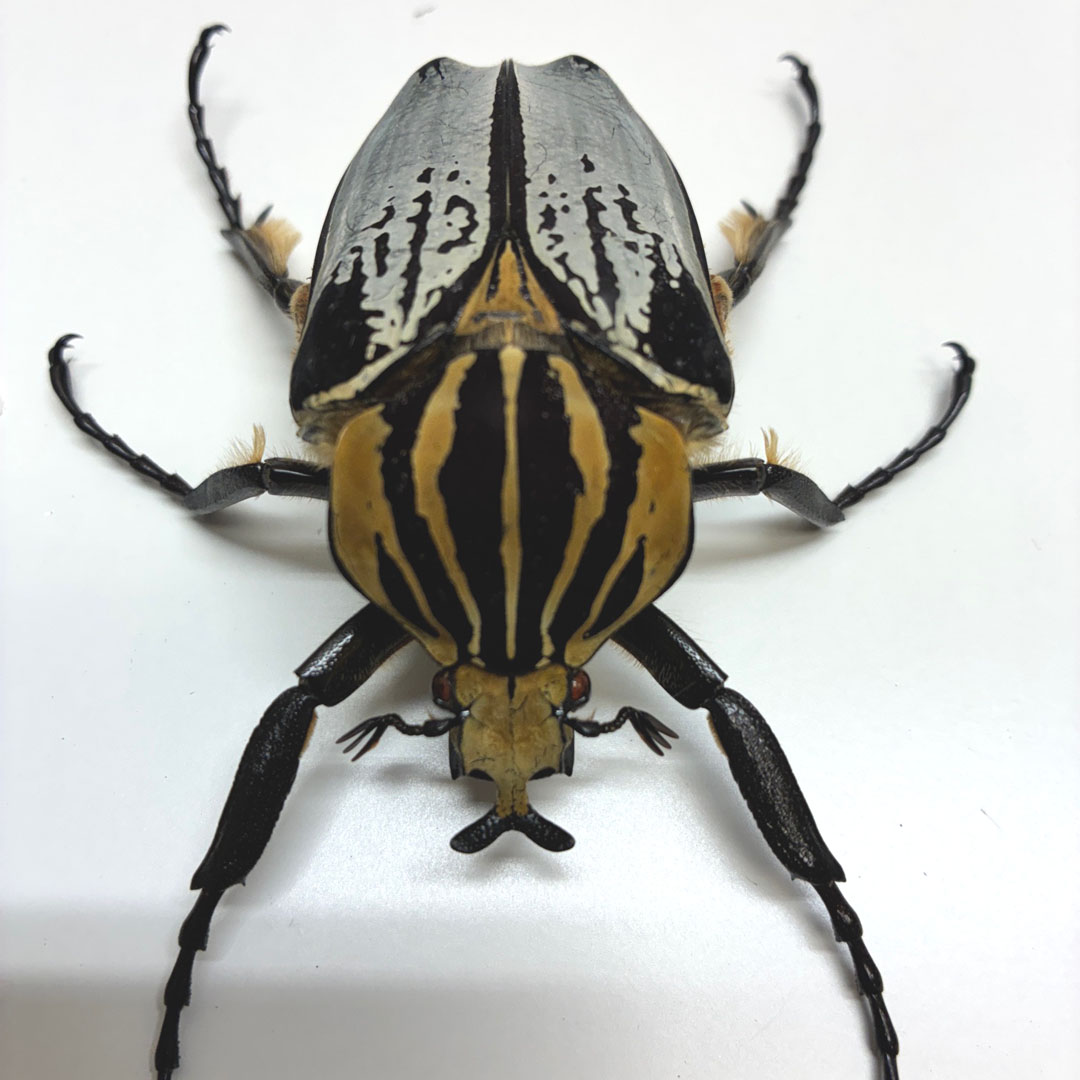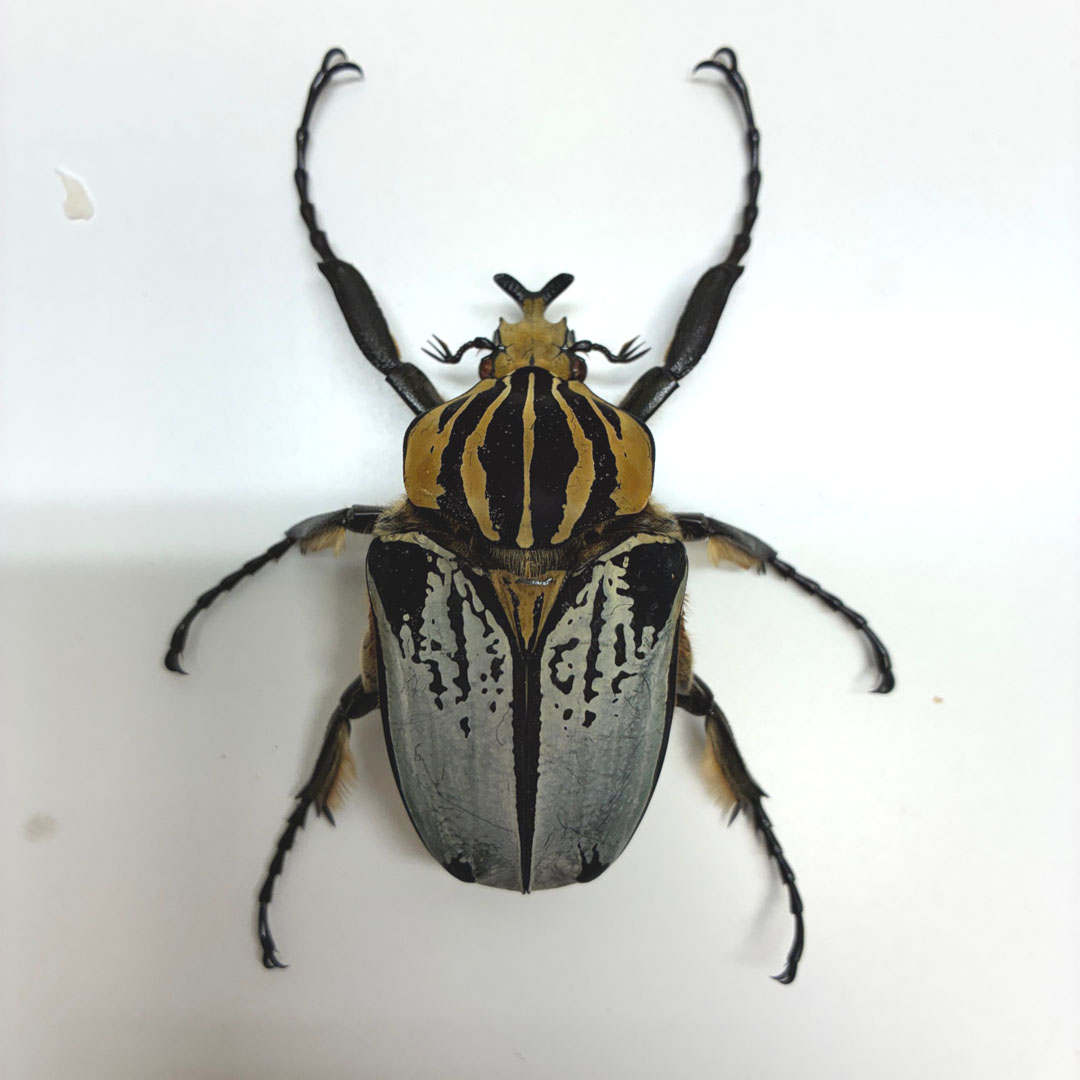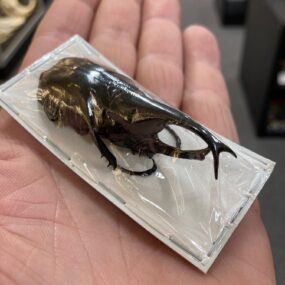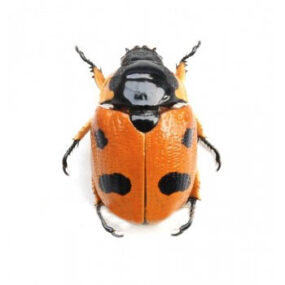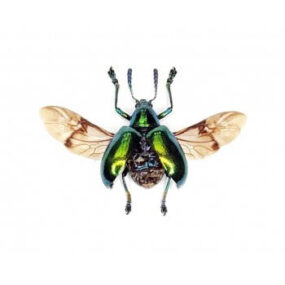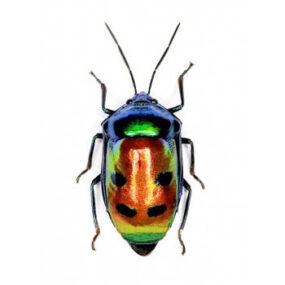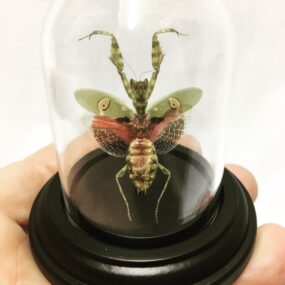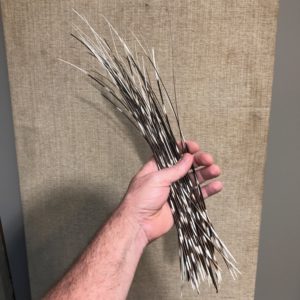Description
Beetle, Goliathus cacicus, Chief Goliath Beetle, Beautiful and very Rare Male Specimen, 62.7mm. You will receive this exact specimen, and it is from an old collection.
The Goliathus cacicus, also known as the Chief Goliath Beetle, is another fascinating member of the Goliath beetle genus and one of the largest beetles in the world. It’s named Goliathus cacicus due to its striking appearance and commanding presence, often associated with royalty or nobility in local folklore. Here’s what makes this species so amazing:
Key Facts About the Chief Goliath Beetle:
- Size: The Goliathus cacicus may not always reach the same colossal size as Goliathus regius, it can still grow to nearly 4 inches (10 cm) in length. These beetles are heavy and robust, with adult males sometimes weighing more than 3 ounces (85 grams). The larger sizes have become almost impossible to find.Goliathus cacicus, Chief Goliath Beetle
- Color and Pattern: The Chief Goliath Beetle has a stunning combination of colors, typically featuring shades of white, yellow, and black. Its body is covered in iridescent scales that shimmer in the light, and the patterns on its elytra (the hardened wing covers) are often strikingly bold. Males have more pronounced horns than females, and their coloration can be more vivid, further emphasizing their role in combat for mates.
- Horns and Sexual Dimorphism: Like many species in the Goliathus genus, males of Goliathus cacicus possess large horns on their heads and thoraxes. These horns are used in battle with other males during the mating season. The largest and most impressive males tend to win these battles and secure mates. The females, by contrast, lack the prominent horns, giving males a distinctive appearance that’s crucial for recognition.
- Habitat: The Chief Goliath Beetle is native to tropical and subtropical regions of Central Africa, particularly in countries like Cameroon, Gabon, and the Democratic Republic of Congo. These beetles are usually found in rainforests or wooded areas, where they feed on tree sap, fruit, and other plant material.
- Diet: The adult Goliathus cacicus beetle is a herbivore. It feeds on a variety of plant matter, such as fruit, tree bark, and leaves. In their larval stage, however, they feed on decaying wood and other organic material found beneath the forest floor. The larvae help decompose plant matter, playing a critical role in the nutrient cycling of their ecosystems.
- Flight: While their large size makes them seem cumbersome, Goliathus cacicus beetles are capable of flight. They have powerful wings that can extend and enable them to take short flights, usually during mating periods or in search of food.
- Strength: Like other Goliath beetles, the Goliathus cacicus is known for its strength. In fact, it can lift objects several times its own weight, a trait that helps the beetles during their digging and foraging activities.
- Goliathus cacicus Goliath Beetle
The Lifecycle of Goliathus Cacicus:
- Eggs: The female lays her eggs in decaying wood or other organic material, providing a perfect environment for the larvae to hatch and begin feeding.
- Larvae: The larvae grow quickly, consuming decaying matter for several months. They are impressive in their size at this stage, and the larvae of Goliathus beetles are some of the largest insect larvae in the world.
- Pupation: After the larvae mature, they burrow into the ground and pupate, undergoing a transformation into the adult form.
- Adults: The adult beetles live for about 3–4 months, during which they focus mainly on mating, feeding, and, in males, fighting for dominance and access to females.
Interesting Tidbits:
- Cultural Symbolism: The Chief Goliath Beetle, with its large size and striking features, is sometimes viewed as a symbol of power and strength in some African cultures. They are revered for their sheer physical presence, and their large horns add an element of majesty to their appearance.
- Role in Ecosystem: Like other Goliath beetles, the larvae of Goliathus cacicus contribute to the decomposition of organic material, which is essential for maintaining healthy soil in their tropical environments. By breaking down decaying wood and leaves, they help to recycle nutrients back into the ecosystem.
- Collecting and Conservation: Due to their impressive size and striking appearance, Goliath beetles, including Goliathus cacicus, are sometimes collected by insect enthusiasts or kept as pets. However, they can be difficult to care for due to their specific dietary needs and the fact that they require a tropical climate to thrive. In some regions, there are also concerns about the impact of insect collecting on wild populations.
- Comparisons: While Goliathus cacicus may not be as universally known as Goliathus regius (the “royal” Goliath beetle), it is still incredibly impressive. The combination of its large size, distinctive horns, and beautiful coloration makes it a standout in the world of giant insects.
In essence, the Chief Goliath Beetle is a true marvel of nature, embodying the grandeur and raw strength that you’d expect from an insect with the title of “chief.” With their intimidating appearance and remarkable life history, they’re an unforgettable species of the insect world!
Goliathus cacicus Goliath Beetle
Beetle, Goliathus regius, Royal Goliath Beetle, Beautiful Male Specimen, 97.2mm


